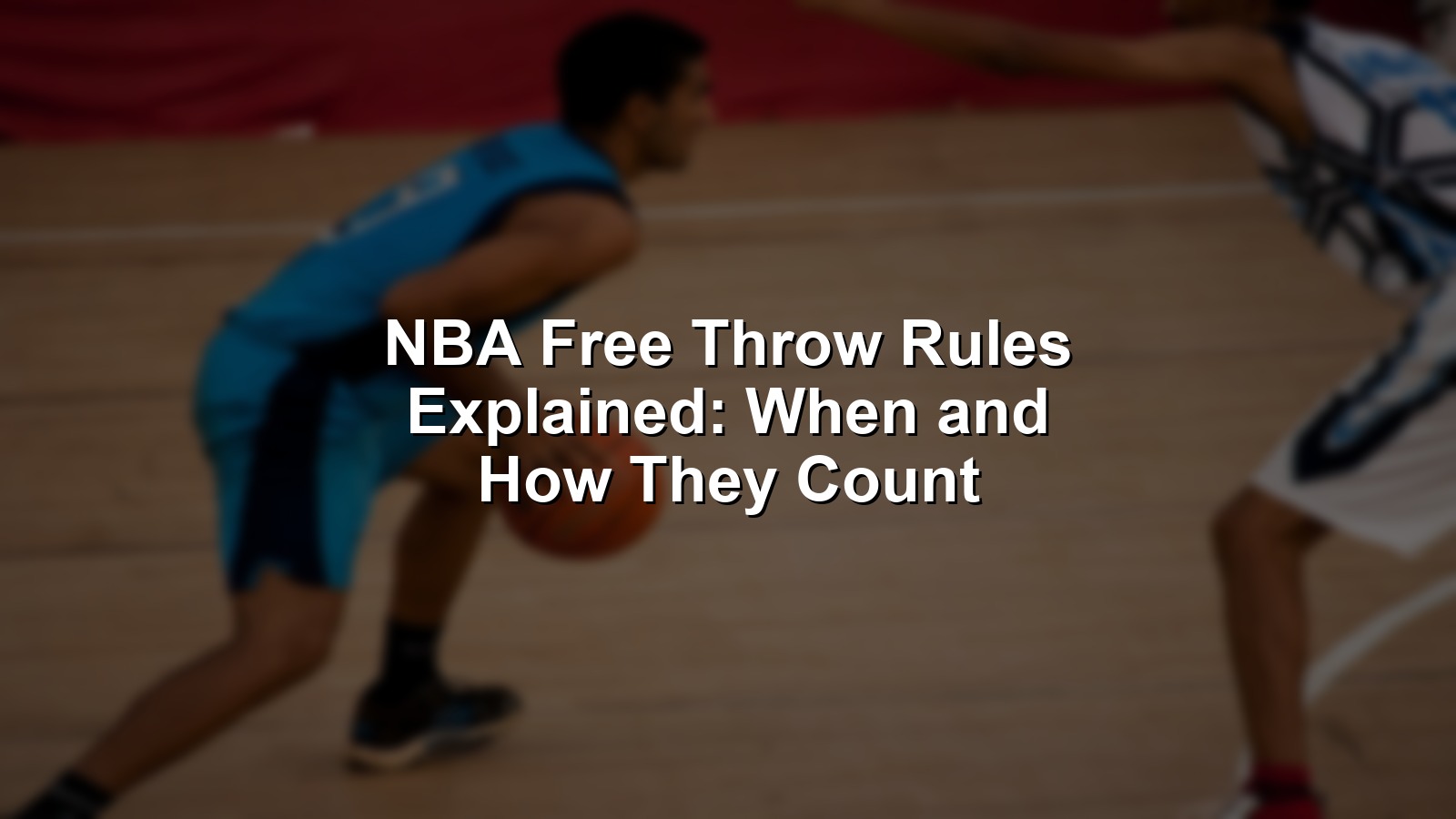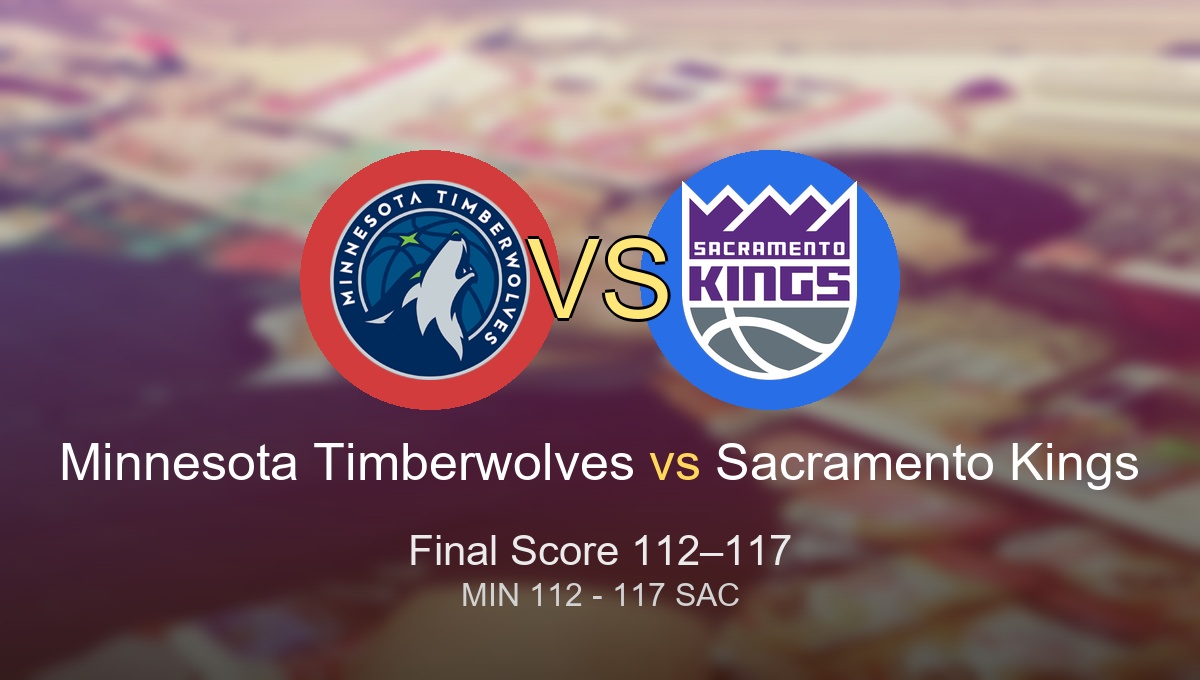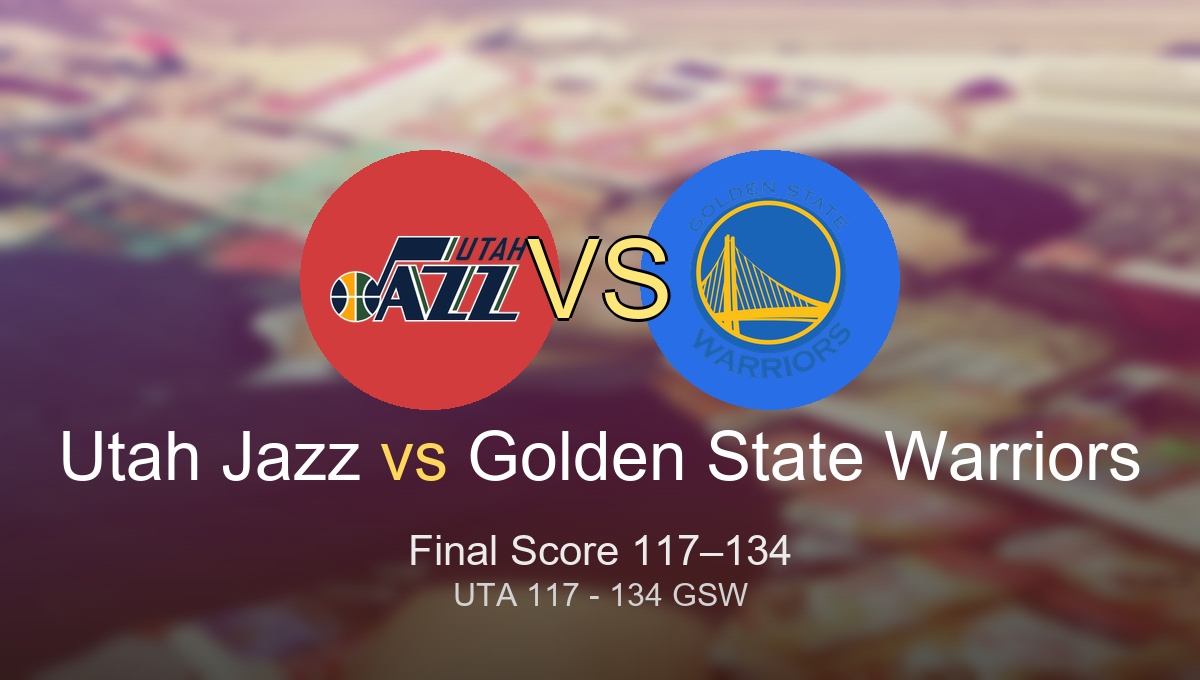
There’s a hush across the arena. The clock’s frozen. Every eye is on the free throw line. Understanding when free throws are awarded, how they’re attempted, and their ripple effect on NBA history is fundamental to appreciating basketball at its highest level. “NBA free throw rules explained” isn’t just a beginner’s concept—it’s a key to decoding countless iconic moments, championships won and lost, and the subtle chess match between coaches.
Some of the league’s most legendary titles have hinged on free throws—think Ray Allen’s ice-cold makes in Miami, or Shaq’s infamous struggles under pressure. The ritual of stepping to the stripe, isolation amid chaos, defines not just games, but entire careers.
Knowing when and how free throws count connects all fans to the pulse of NBA drama, spotlighting why free throw rules are woven into the league’s DNA.
Context: Why This Matters
Free throws are the NBA’s great equalizer: they turn aggression into opportunity, reward fearlessness, and expose cracks in a superstar’s armor. In countless barbershops and fan forums, debates rage about how “soft” calls or “old-school” rules shape modern basketball.
Some argue that NBA skill is best shown in open play. Others point to the poise required at the line, under duress, as the ultimate separator between pretenders and champions. Missing a free throw in crunch time? For some, it’s a blip. For others—see Nick Anderson in the ’95 Finals—it’s a forever scar.
Beyond the technicalities, the rules force us to reckon with championship pressure, player psychology, and what it truly means to be clutch.
Methodology
This list digs into the ten most critical free throw rule moments, evolutions, and their impact on NBA games—past, present, and future.
How we broke it down:
– Historic Impact (40%): Did the rule or moment reshape how teams play? Did it alter the course of a season or Finals?
– Statistical Longevity (30%): How often does this rule come up? How frequently is it tested?
– Cultural Resonance (20%): Did it spark league-wide debate, change strategy, or live on in fan memory?
– Championship Implications (10%): Did it directly affect outcomes on the biggest stage?
Sources include: NBA Official Rulebook, Basketball-Reference’s Free Throw Stats, and historical reviews from ESPN.
The Moments That Changed Everything
1. The 2002 Western Conference Finals: Lakers vs. Kings and the Anatomy of a Whistle
Game 6. Sacramento versus Los Angeles. Fourth quarter. The Lakers step up to the line 27 times—a playoff record in a single quarter. The collective gasp among Kings fans still echoes today.
That avalanche of free throws redefined not only the series but scrutiny over NBA officiating. Shaquille O’Neal and Kobe Bryant won the day thanks to a parade at the charity stripe, culminating in a Finals berth and yet another championship to their dynasty. This moment put free throw rules under the microscope, fueling endless debate about ref influence and “home cooking.”
It was a watershed night. Since then, the NBA has taken steps to ensure transparency and reduce the perception of bias—introducing Last Two Minute reports and investing in data-driven officiating tools.
A Kings fan sums it up best: “It wasn’t just the game. It was trust in the game.”
Key facts:
– Western Conference Finals, Game 6, 2002
– Lakers made 34 of 40 free throws
– Sparked major officiating reforms
Authoritative sources: nba.com, basketball-reference
🧵 On X
https://x.com/search?q=2002%20Lakers%20Kings%20free%20throws&src=typed_query
2. “Hack-a-Shaq”: The Rule, the Big Man, and the Counter
Any time Shaquille O’Neal checked into the game in the 2000s, coaches faced a tactical dilemma. Intentionally fouling poor free throw shooters—now dubbed “Hack-a-Shaq”—became an accepted late-game weapon. Picture Popovich and the Spurs lining up deliberate hacks, sacrificing the foul count to stop L.A.’s machine.
Why did this work? NBA free throw rules explained that off-ball fouls in certain situations still resulted in attempts, prolonging games and testing nerves. Tinkering with these rules over decades led to new interpretations: after the final two minutes, only away-from-the-ball fouls give a single shot and possession.
Shaq’s line eternally reminds us, “I make ’em when they count.”
This ranks high because the ripple effect is still felt—rule tweaks continue to shape whether bigs stay on the floor or hide on the bench.
Key facts:
– Shaq: 52.7% career FT shooter
– Rule changes in 2016 for late-game fouling
– Tested player endurance and pace
Authoritative sources: nba.com, espn.com
🧵 On X
https://x.com/search?q=Hack-a-Shaq%20rule%20NBA&src=typed_query
3. “And-One!”—The Essence of a Three-Point Play
Picture Allen Iverson slicing through the lane, absorbing a hard foul, and somehow banking in the bucket. The crowd erupts—“AND ONE!” is more than a soundbite; it’s basketball poetry.
NBA free throw rules explained the value of simultaneous scoring and drawing contact. Tagging the hoop plus the harm means a single free throw, setting up the classic three-point play. This rule rewards aggression, star power, and theatrics—fueling the highlight reels.
Allen Iverson once said: “If you’re scared of contact, don’t come into my lane.”
Its high rank comes not from momentary drama but its enduring role in how stars bend defenses and change scoring totals.
Key facts:
– In effect since league founding
– Encourages aggressive offense
– Thirty-point games often built on and-ones
Authoritative sources: nba.com/rules/history, basketball-reference.com
🧵 On X
https://x.com/search?q=and%20one%20NBA&src=typed_query
4. The Bonus Rule: 5th Foul, Free Throws for All
In a pivotal 1987 playoff game, the Boston Garden echoed with boos as the Pistons racked up five quick fouls. Suddenly, every simple drive by Larry Bird or Kevin McHale earned two guaranteed shots. Why? The NBA “bonus”—each team’s fifth foul in a quarter sends the opponent to the line, regardless of shooting.
This changed the fabric of endgame strategy. Coaches must now juggle rotations, preserve fouls, and sometimes go offense-for-defense just to manage whistles.
Bird, never shy, described the bonus: “You outwork me for 10 minutes, and I’ll outsmart you for two free throws every time.”
This ranking stands because the bonus remains a lever for coaching minds, especially in the playoffs.
Key facts:
– Five team fouls per quarter trigger bonus
– Double bonus: 2 shots, no 1-and-1
– Key in every modern NBA quarter
Authoritative sources: official NBA rulebook, basketball-reference
🧵 On X
https://x.com/search?q=NBA%20bonus%20free%20throw%20rule&src=typed_query
5. The “Clear Path” Foul: Stopping the Break… or Not?
It’s Game 4, Bucks-Suns, 2021 Finals. Giannis Antetokounmpo races up court. A trailing defender mugs him—whistle! This isn’t a usual foul; it’s a “clear path.” Instead of ruining an open dunk, the offense gets two free throws and the ball back.
The clear path rule, refined over years, is a modern answer to hard fouls that spoiled easy highlights. It balances safety, drama, and fairness.
One coach explained: “We want to see Giannis fly, not get held down.”
It’s crucial in today’s athletic, transition-heavy league—rewarding speed and punishing lazy or dangerous fouls.
Key facts:
– Two free throws + possession if a clear path is blocked
– Major 2018 definition change
– Keeps pace and protects stars
Authoritative sources: nba.com/news/rule-changes-clear-path, espn.com
🧵 On X
https://x.com/search?q=clear%20path%20foul%20NBA&src=typed_query
6. Wilt Chamberlain’s 100-Point Game: The Free Throw Outlier
March 2, 1962. Wilt Chamberlain’s iconic 100-point game. Stat heads remember: Wilt was a historically bad free throw shooter, but he made 28 of 32 that night—a career anomaly.
Without his proficiency at the stripe for those few quarters, basketball might never have seen a triple-digit score for an individual. This outlier spotlights how free throw rules can allow even struggling shooters to rewrite history in a single night.
As Wilt later joked, “The line’s the line. You just gotta step up.”
It’s a ranking that bridges rules, stats, and myth—an unrepeatable night.
Key facts:
– 100 points, 28/32 FT (career: 51.1%)
– Changed how players approached the record books
– Sparked later discussions on free throw technique
Authoritative sources: basketball-reference.com, nba.com/history
🧵 On X
https://x.com/search?q=Wilt%20Chamberlain%20100%20point%20game&src=typed_query
7. The Evolution of Technical Fouls: One Shot, Big Statement
Draymond Green slams the scorer’s table after a missed call. The whistle blows—technical foul, one free throw.
As emotions flare, so does the value of that single point. In earlier decades, technicals carried two shots; rules have since evolved, emphasizing both discipline and game flow. How coaches, stars, and role players walk the tightrope of passion versus penalty is part science, part theater.
“It’s mind games out there,” Draymond would later reflect.
Scoring on a technical can shift momentum—sometimes as dramatically as a buzzer-beater.
Key facts:
– Current rule: one shot for technicals since 2012
– Impacts close games and player behavior
– Enforced for player and coach actions alike
Authoritative sources: nba.com/rulebook/technical-foul, basketball-reference.com
🧵 On X
https://x.com/search?q=NBA%20technical%20foul%20free%20throw&src=typed_query
8. The Lane Violation: Split-Second Drama
Picture this: Game 7, shot to tie, but as the shooter releases, a defender steps into the lane early—violation. The attempt is wiped, or repeated.
Lane violations often go unnoticed until they decide crucial moments—reminding us that not all free throws are just about form, but about timing, rules, and discipline up and down the roster.
In the words of a savvy veteran: “Win the little battles, win the game.”
It’s ranked here because its subtle impact lingers longer than the highlight reel suggests.
Key facts:
– Offense or defense can violate lane entry
– Shot nullified or redone
– Decides rare, critical games
Authoritative sources: nba.com/rulebook/violations, espn.com
🧵 On X
https://x.com/search?q=NBA%20lane%20violation%20free%20throw&src=typed_query
9. The Intentional Miss: Mastering the Art of the Rebound
Chris Paul steps to the line down two with 0.2 seconds left. He’s not aiming for the make—he’s going for the ricochet, hoping for a tip-in miracle.
The rules here are tricky: players cannot blatantly fumble or fail an attempt, lest refs call a violation. Yet, crafting the perfect miss is now a skill, one that’s been legislated and watched closely with ever-evolving interpretations.
Fans never forget when it works. “It’s a one-in-a-hundred shot, but it’s in the playbook,” one assistant coach says.
Ranked for the edge it gives to desperate teams—and the tension it injects at the game’s finale.
Key facts:
– Shooter must hit rim on the miss
– NBA rules penalize “untry” attempts
– Comebacks sometimes hinge on this quirk
Authoritative sources: nba.com/rulebook/free-throws, basketball-reference.com
🧵 On X
https://x.com/search?q=NBA%20intentional%20miss%20free%20throw&src=typed_query
10. The New “Gather and Shooting Motion” Foul: James Harden Era Precision
A whistle blows as James Harden initiates contact, throws up a shot, and gets three free throws. In 2021, the NBA clarified rules on “gather” and “shooting motion,” aiming to curb unnatural, baited fouls that had become signature moves for Harden and Trae Young.
This rule tweak changed scoring totals overnight and forced stars to adapt. It also divided fans—some praised the purity, others missed the creativity.
A rival guard commented: “Now you’ve gotta EARN two shots.”
It’s ranked here as a sign of how quickly the NBA reinvents itself when player innovation tests the system.
Key facts:
– Harden drew 800+ FTs (2018–2020) using old methods
– 2021 rule change cut “non-basketball” contact FTs
– Sparked debate over what’s ‘natural’
Authoritative sources: nba.com/news/foul-interpretation-explained, espn.com
🧵 On X
https://x.com/search?q=James%20Harden%20free%20throw%20rule%20change&src=typed_query
Final Thoughts
The NBA’s free throw rules are more than instructions on the page—they’re living debates that shape, decide, and haunt the game’s biggest moments. From the parade at the line in the 2002 Finals, to the artistry of the “and-one,” and the endless tweaking to contain innovation, these rules are the silent motor behind championships and heartbreaks alike.
Tomorrow’s stars—whether they’re driving to the rim, perfecting trick-bounce misses, or testing the boundaries of “gather”—will force the league to refine these rules again. Each shift reflects the battle between offense, defense, and fairness that defines the NBA’s evolution.
For fans, players, and coaches, knowing the why and how of free throws is part of knowing the soul of the game. And as history shows, one trip to the line can echo forever.



